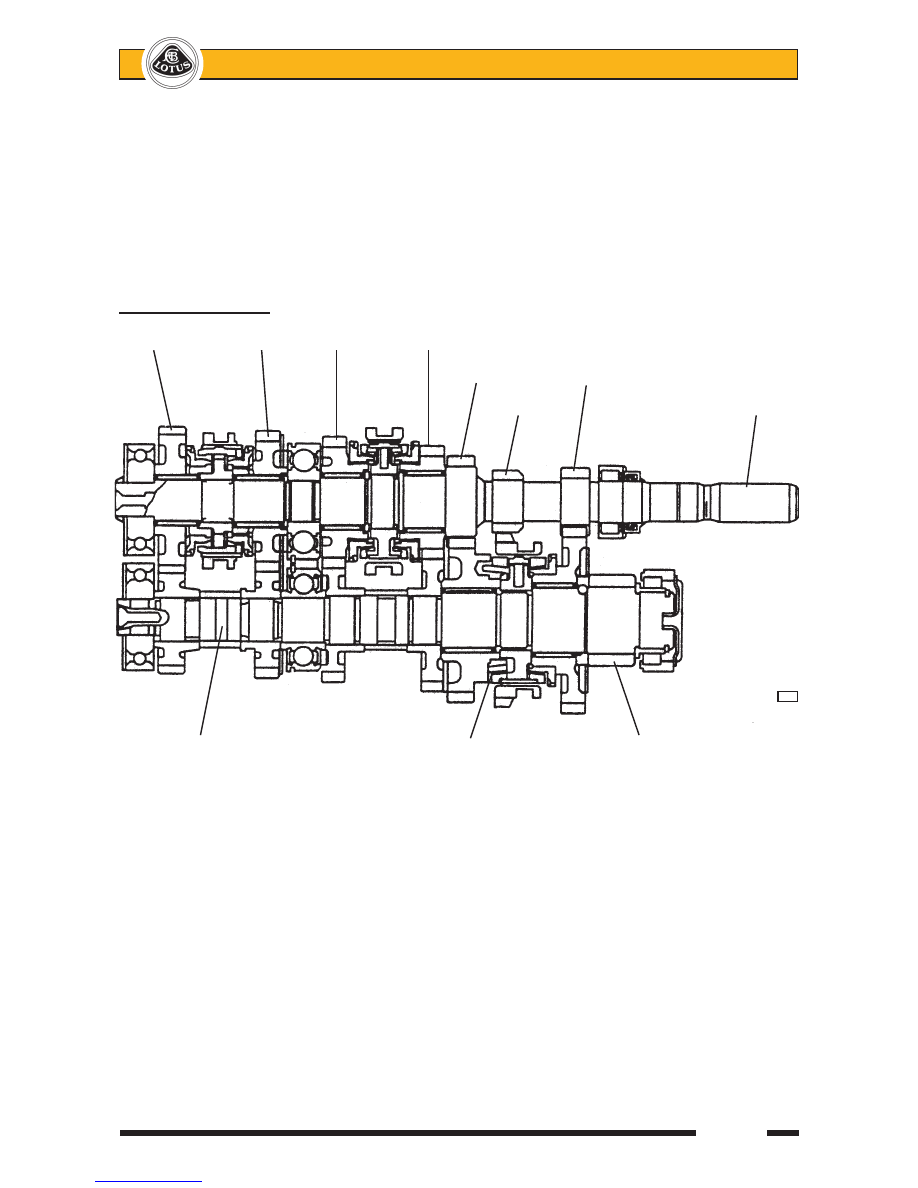Lotus Elise / Lotus Exige. Instruction - part 46

Page 3
Lotus Service Notes
Section FJ
The clutch housing bolts to the back of the engine block and provides a dry chamber for the clutch mecha-
nism, and roller bearings for the gearbox input and output shafts. The taper roller bearing for the differential
RH output shaft is also accommodated. The gearbox main case provides ball bearings for the two shafts, and
houses gears 1 to 4 including the reverse gear pinion on its idler shaft. The end cover or casing houses 5th
and 6th gears. On the 5-speed transmission, the 5th speed gears are overhung on the ends of the input and
output shafts, but on the 6-speed, the alloy end cover contains ball bearings to support the ends of the two
extended shafts, both of which are thus supported by a total of three bearings. The housing for the final drive
and differential is shared between the clutch housing and main case, with taper roller bearings supporting the
differential case.
6-Speed Gear Clusters
The input shaft includes integral drive pinions for 1st, 2nd and reverse gears, and carries the clutch driven
plate, the 3rd/4th synchroniser and the 5th/6th synchroniser, with the latter housed in the end cover. The output
shaft features an integral final drive gear, spline fixed 3rd/4th/5th/6th driven pinions, and carries the 1st/2nd
gear synchroniser. All forward gears are constant mesh with inertia lock type synchromesh, with reverse gear
attained by sliding a spur idler pinion into engagement with both a gear on the periphery of the 1st/2nd syn-
chroniser and a drive gear integral with the input shaft. All gears, with the exception of reverse, use a helical
tooth form for quiet running.
Sychromesh: For each gear ratio, one of the shafts has a fixed gear, and meshes with a freely revolving gear
on the other shaft. To engage a particular gear, the freely revolving gear must be connected to its shaft via
the sychro hub. As an example, third gear operates as follows: Under normal road driving, when the clutch is
depressed as a precurser to a gear change, the input shaft with the third gear synchroniser are de-coupled from
the engine, but will be turning under decaying inertia, clutch windage and oil drag, from the drive pinions (which
in this condition are being driven by the output shaft). Third gear pinion on the input shaft is driven by the fixed
gear on the output shaft, which itself is driven by the roadwheels. Before the outer sleeve of the synchroniser
may be slid on its axial splines to engage with the spline ring integral with third speed input shaft gear, the speeds
of the two parts must be commonised. To aid this process, a sychroniser/baulk ring is fitted between the two
parts, being rotationally driven by the synchroniser, and equipped with a female conical surface to mate with a
6th gear 5th gear 4th gear 3rd gear
2nd gear 1st gear
Reverse Input shaft
f130
Output shaft Double cone 2nd Final drive gear
gear synchromesh